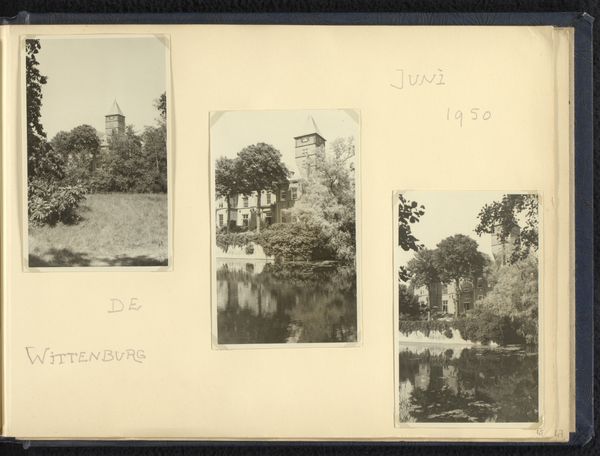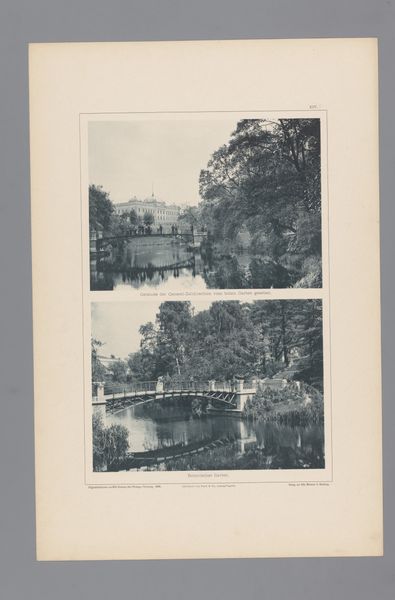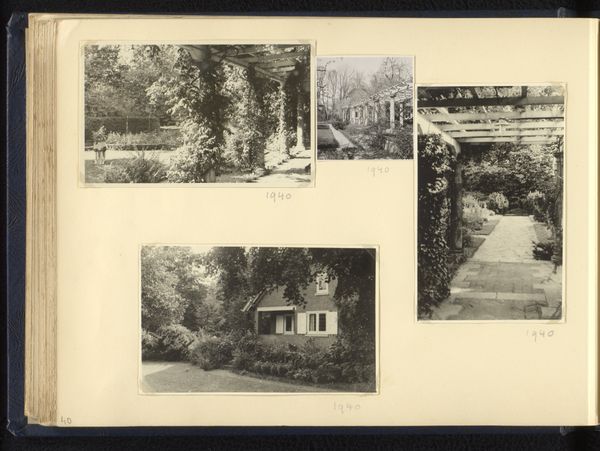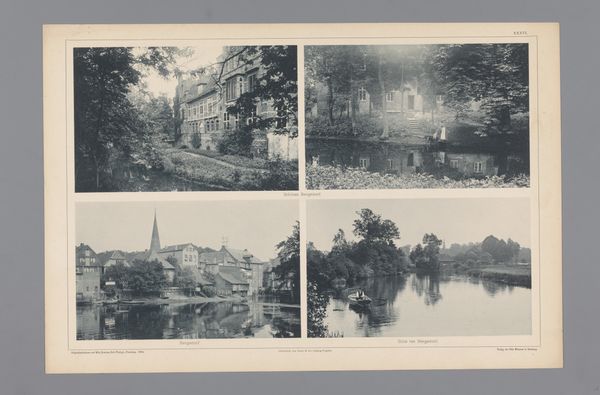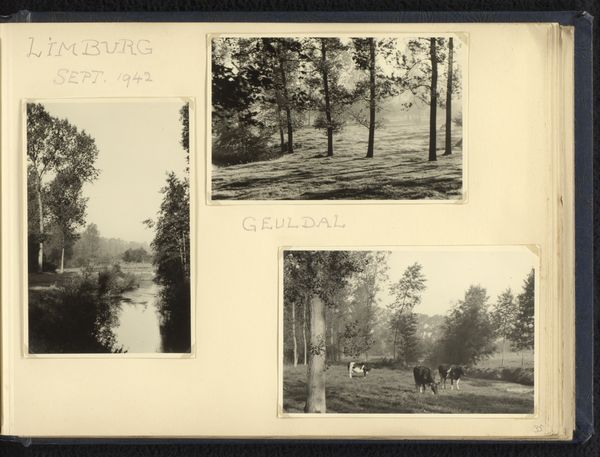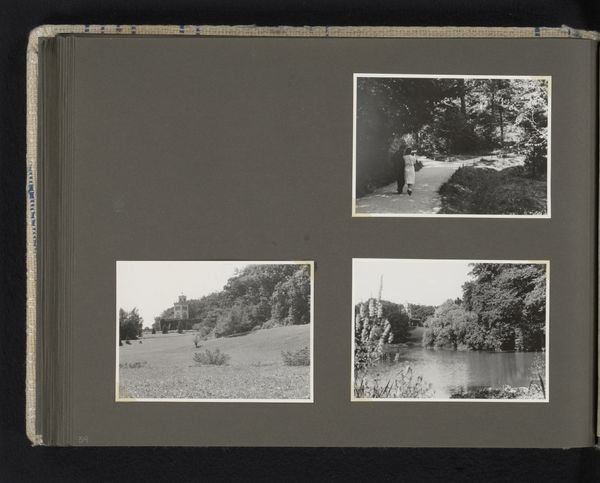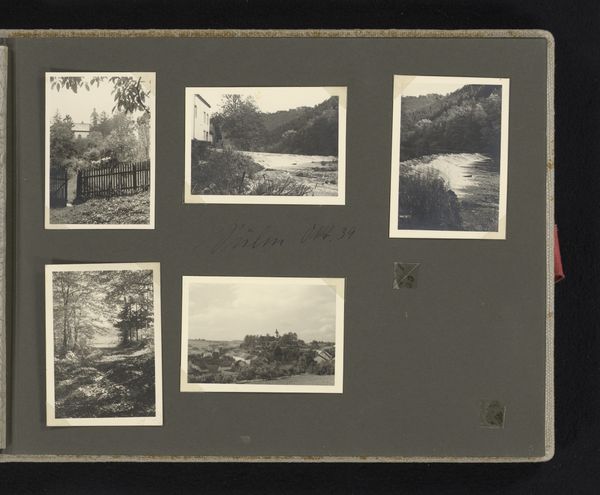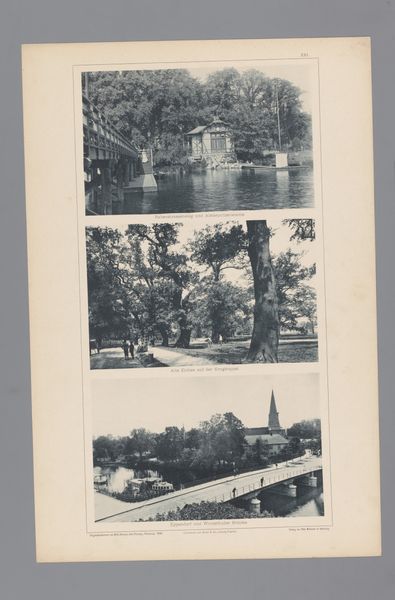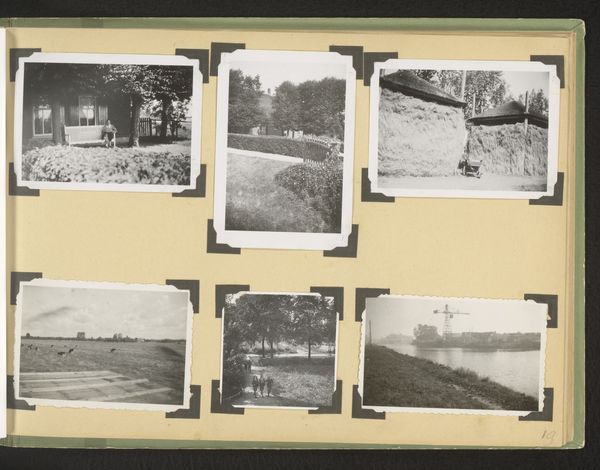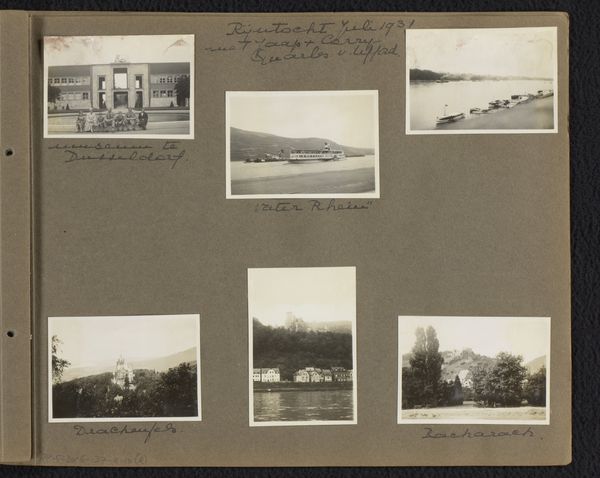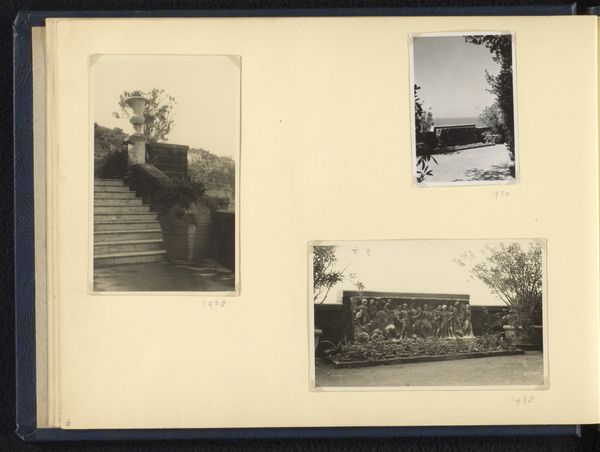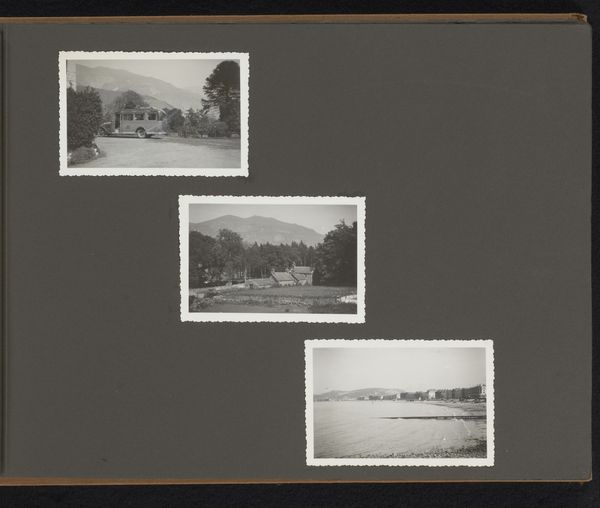
photography, albumen-print
#
landscape
#
photography
#
cityscape
#
albumen-print
#
realism
Dimensions: height 232 mm, width 336 mm
Copyright: Rijks Museum: Open Domain
Curator: The layout and stark monochromatic nature of this collection create a strangely peaceful affect. Editor: I agree. The artwork before us, entitled "Vier foto's van kasteel en landgoed De Wittenburg," which translates to “Four Photos of De Wittenburg Castle and Estate,” produced between 1950 and 1956 by Norbert van den Berg, offers a captivating window into a specific time and place through the albumen print. Curator: Seeing how these are mounted into an album like this definitely provides clues to the cultural contexts and means of display typical for photograph series in the mid-twentieth century, especially those intended to be records for the family or individual, rather than as art intended for a gallery. Editor: Exactly! The album as a vehicle is so important in reading photographs as embedded in institutional and social life. We are viewing photographs originally situated in social histories of family life and display, in this case maybe in family archive? These particular four albumen prints convey this landscape with the goal to capture it—they evoke nostalgia and document an experience rather than necessarily strive for aesthetic value. They have a “snapshot” type aesthetic, even if this doesn’t reflect the actual means of production of albumen prints. Curator: And thinking of the means, we have to take into account the choice of using the Albumen printing process—a technique that renders beautiful tonal qualities and surface finish through meticulous labor, and popular in the nineteenth century, especially—why use this older process in the middle of the twentieth century when gelatin silver was readily available? Is it used to connect the modern inhabitants and viewers to an older era in landscape and life on an estate? It suggests both conscious effort to represent the images in certain light, and an appeal to its traditional aesthetics, or what was expected from the upper middle class to consume and desire. Editor: Very insightful! The black and white tone palette lends it that classical or even historical feel, emphasizing realism over modern movements, connecting us to its legacy of class display, memory, and the very social functions of documentation. I wonder, does anyone who encounters this view consider its place in a private versus public display now? Curator: These images are not just about scenery; they offer material entry points into past lifeways and class status during a specific time. Editor: I wholeheartedly agree; these understated photographs whisper tales of social, cultural and economic life of an estate across time and reception—something to always keep in mind in this setting.
Comments
No comments
Be the first to comment and join the conversation on the ultimate creative platform.
